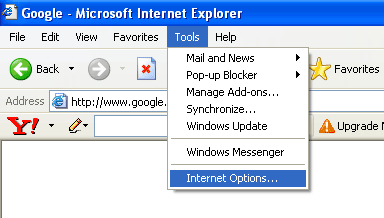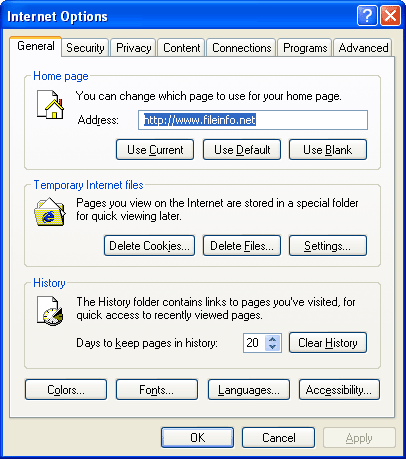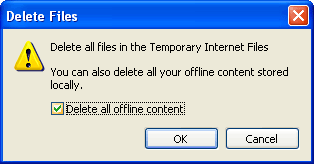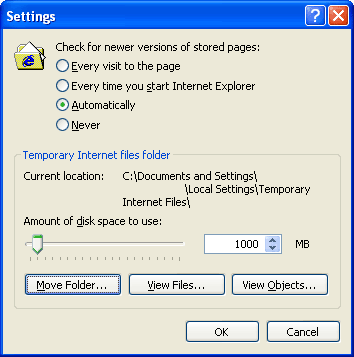How do I delete Temporary Internet Files in Windows?
Internet Explorer and other Web browsers create "Temporary Internet Files" to store user data, such as HTML and images from visited Web pages, cookies, and the user's browsing history. These files can speed up Web browsing by storing data locally on your hard drive. When you visit a Web page you have already been to, the browser can access some of the information directly from your hard drive instead of having to send for it over the Internet again.
However, Temporary Internet Files can also take up a lot of space on your hard drive. If you are trying to conserve hard drive space, you may want to clear the cache of files your Web browser has saved on your computer. You can delete Temporary Internet Files in Windows by selecting in Internet Explorer.

The following window should appear:

Click to delete all Temporary Internet Files. To save even more space, check the "Delete all offline content" option in the next window that appears.

You may also limit the number of Temporary Internet Files that Windows stores by clicking the button. The following window will appear:

Move the slider to the left to reduce the amount of space Windows will use for storing Temporary Internet Files. You may also move the slider to the right to increase the amount of disk space used for storing Temporary Internet Files.
The more space you choose, the more files will be cached by Internet Explorer. This means pages you visit frequently may load faster because the images and other referenced files are already saved on your hard disk. It also means more of your hard disk will be used to store temporary files. No matter what size limit you choose, it is a good idea to delete all Temporary Internet Files every month or so. This prevents corrupted files from causing problems with your browser.